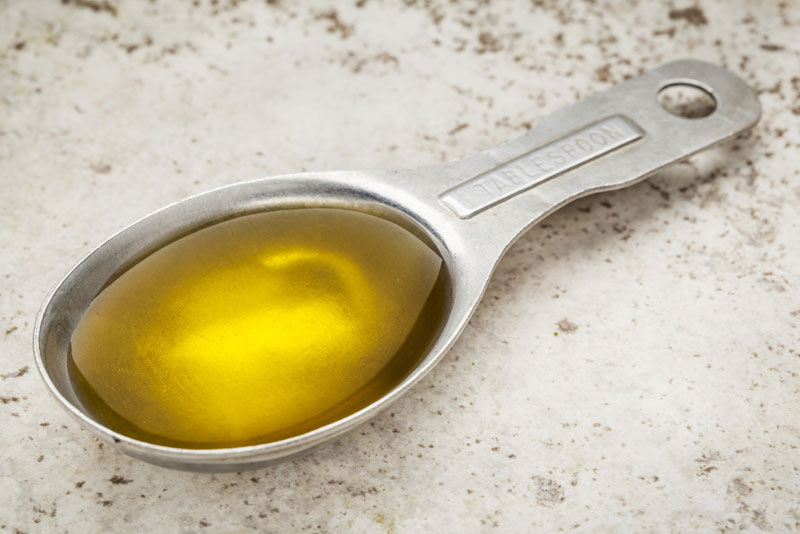Safflower is an oil that has gained a quite a bit of popularity in recent years. It's now found in baked goods, cookies, bars, chips and other natural snacks. That said, it's not quite as prevalent as it's cousin, sunflower oil, or the main-stay food industry, canola oil. But, many brands are starting to use this oil more and more.
For those of you without much experience with safflower you may wonder if it's an oil that should be used in food production if it's ideal for cooking in your own kitchens. Is it good or bad?
Today, I will begin to help explain and give you the rundown on safflower oil. We will get into why people do or don't like it, and whether or not you should be eating it.
How is safflower oil made?

Safflower oil is made from the safflower plant. This is a knee-high stalky spike plant, and is a brightly colored sharp bulb at the top of it. The safflower seeds that are used to make the oil are found inside the bulb (flower) of the plant.
Safflower oil can be either high oleic or high linoleic. Each of these descriptors is a type of fat make-up. Depending on the exact variety of seeds used, safflower can contain more of one type of fat or another (linoeic vs oleic acid). In the US, especially in the food industry, high oleic is the most common type that is found. High linoleic is more commonly used overseas and in pet foods. Almost all safflower oils are also refined using a high heat proces
Most safflower oil, including the type that Centra Foods' carries, is an expeller pressed variety. However, solvent expelled safflower oil does exist as well, so make sure to confirm how the oil is removed from the seed before purchasing.
Characteristics of safflower oil
Safflower Oil is a mild oil with an unobtrusive taste. It has a high heat tolerance with very little flavor. It is often used for frying and sautéing because it won't impart it's own taste or aroma into the dishes.
Generally, this oil has:
- Very little flavor
- Light yellow, almost clear color
- Mild aroma and smell
- High smoke point making it a good heat tolerance oil (high oleic only)
- High oleic versions are stable offering a long fry and shelf life
- High oleic versions are also high in healthy monounsaturated fats (70-80%)
- It's naturally non-GMO
The features listed above are all positive benefits to the oil. Expeller pressed varieties avoid using the solvent chemicals so often used in conventional oils like canola and soy. So, there are lots of reasons that safflower oil is a good fit for an ingredient and as a cooking oil.
With all of the positives above, why wouldn't someone want to use safflower oil? Any cons that are related to safflower are usually connected to misunderstandings about seed oils in general -- what is found true for some seed oils (like being produced with hexane), people will mistakenly apply to all seed oils without a full understanding.

No High trans fats
Safflower oil is also ideal if you want to avoid trans fats.
Trans fats are something that a lot of people tend to discuss when they talk about vegetable oils in general. Oil that have contained trans fats in the past are typically partially hydrogenated seed oils such as canola, soybean, etc. The trans fats are due to the fact that they were modified using a process called "partial hydrogenation". This is a chemical process that makes a liquid oil turn to a solid at room temperature.
This process was taken off the FDA's GRAS (Generally Recognized As Safe) list in 2018, and all partial hydrogenation on oil has ceased. Yes, you read that correctly -- as of 2018 partially hydrogenated oils are no longer considered safe to eat by the government. Companies had to start working to reformulate products so they they no longer contained partially hydrogenated oils.
What does this have to do with safflower oil? Many people apply the negative of these trans fats, explained above, to all vegetable or seed oils in general. With safflower, even though it is a seed oil, it isn't a partially-hydrogenated seed oil. It is a liquid, and it will not contain trans fats that are created through the partial hydrogenation process. In addition, this process is no longer used, so it's not a risk in the same way it once was.
So let's be clear on this front - stay away, I REPEAT, stay away from PHOs at all costs! The partial hydrogenation process leaves unstable molecules which is what creates trans fats. A fully hydrogenated oil is different and is much more stable. These oils do not contain trans fats, and you are going to see them even more in the years to come.
in conclusion: Is Safflower bad or good?
Look for the highest grade of Safflower Oil is you are going to use it: High Oleic, Expeller Pressed Safflower Oil. It has high monounsaturated fat levels in comparison to many of the other oil options. If often has more monounsaturated fat than olive oil does!
It is also expeller pressed (aka it doesn't use a chemical solvent to extract the oil) and naturally non-GMO. It also doesn't have trans fats.
At the end of the day, this oil is rather healthy for you in comparison to many other options!












